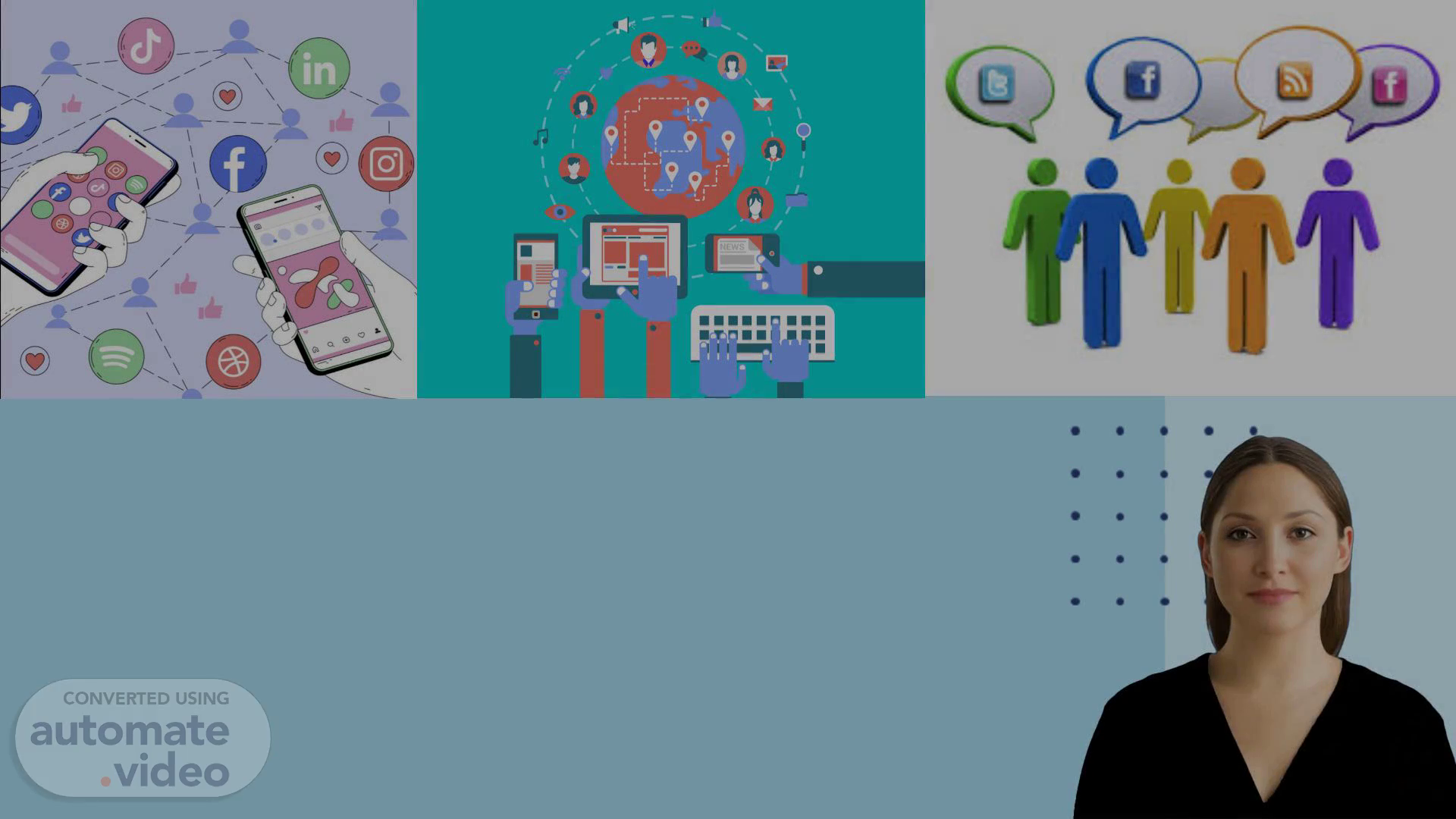
Page 1 (0s)
[Virtual Presenter] Good morning everyone. Today, I will be talking about Computer Mediated Communication. I will go into detail about its two types, the advantages and disadvantages, and finally I will draw a conclusion. I hope you will find this information useful. Let's begin..
Page 2 (22s)
[Audio] Computer Mediated Communication dates back to the early 1970s, when the first networks of computers were created. Developments over time have enabled CMC to become an integral part of everyday life, with applications ranging from email, text messaging, and social media, to online gaming, teleconferencing, and collaboration tools. Significant breakthroughs include the inception of the World Wide Web in the early 1990s, allowing for the easy transfer of information on a global scale. With a myriad of modern applications at our disposal, CMC has come a long way since its beginnings. To summarize, the future of CMC is brimming with potential, with new innovations and ideas constantly emerging..
Page 3 (1m 14s)
[Audio] CMC is a form of online communication between two or more people. This can include text messages, emails, video conferencing, and other forms of communication. It has become more sought-after as it can be used regardless of location or time of day. It has become a highly efficient way to stay in touch with friends, family, and co-workers globally..
Page 4 (1m 41s)
[Audio] Since the invention of the internet in 1969, computer mediated communication (CMC) has evolved dramatically. Now, practically 98% of people utilize this method of communication..
Page 5 (1m 57s)
[Audio] CMC is a way of communicating between two or more people over the internet. It is divided into two categories: synchronous and asynchronous. Synchronous communication happens at the same time, with all parties participating and conversing at once. Examples of this are instant messages or video conferences. For asynchronous communication, the sender does not get an immediate answer from the receiver. Examples of this are text messages, emails, discussion forums or mailing lists..
Page 6 (2m 36s)
[Audio] CMC, or Computer Mediated Communication, has numerous advantages. One of the most notable is that location becomes irrelevant as communication is virtual. This allows people to get feedback from anyone around the world quickly. Furthermore, digital copies of information can be shared and stored for easy access in the future. This makes CMC an invaluable resource for efficient communication..
Page 7 (3m 7s)
[Audio] Computer Mediated Communication (CMC) has a range of advantages to offer. It lowers social barriers between us, both in our personal and professional lives, and creates a bridge between geographically distant locations. Furthermore, CMC provides a valuable resource for education, allowing us to gain knowledge and advance in our chosen fields..
Page 8 (3m 34s)
[Audio] CMC, short for computer mediated communication, can be advantageous for communicating with others, however there are some potential drawbacks. Without a physical presence, direct interaction between individuals is absent. Additionally, as CMC necessitates the use of technology, those who struggle with the technical aspects may find it challenging to use..
Page 9 (4m 0s)
[Audio] CMC comes with its own drawbacks. Without regulating feedback, misunderstandings and false assumptions can occur. As well, technical barriers like difficulty of use and unreliable technology can make CMC difficult to use..
Page 10 (4m 18s)
[Audio] CMC is a type of communication that mainly utilizes electronic devices such as computers, smartphones, and tablets. It can involve any type of human exchange, ranging from synchronous communication which happens in real-time, to asynchronous communication that requires time before a response is given. Examining the diverse kinds of CMC can help us discover new methods of connecting with others and forming relationships..
Page 11 (4m 48s)
[Audio] Computer Mediated Communication (CMC) has changed drastically how people communicate. It allows individuals to exchange information and communicate rapidly over long distances and different time zones. CMC provides the capability to access and spread information from many places. Nevertheless, there are disadvantages to CMC like the lack of physical contact, which eliminates nonverbal cues that would normally be used for clarification, as well as the possibility of technical issues resulting in misunderstandings. In any case, CMC is part of our lives and it will remain being a major factor in communication for a long time..
Page 12 (5m 34s)
[Audio] Computer-mediated communication has become commonplace in our lives. We use it for a variety of reasons, like sharing information, discussing work-related matters and staying connected with family and friends. It can be difficult to decide which form of communication is better - face-to-face or computer-mediated - as both have benefits and drawbacks. Computer-mediated communication offers convenience, but lacks the personal touch of interacting with someone in person. On the other hand, face-to-face communication has the advantage of reacting quickly to nuances, but is limited by time and location. In the end, the decision of which type of communication is more suitable will depend on the context of the particular situation..
Page 13 (6m 25s)
[Audio] For our final slide, some references related to what we’ve discussed include Wikipedia and IGI Global for general information, Study.com and Science.gov for more detailed facts, SocioSci.org, Edutechwiki and Google Images for visuals and Slidesgo for a template..
Page 14 (6m 44s)
Thank you!.